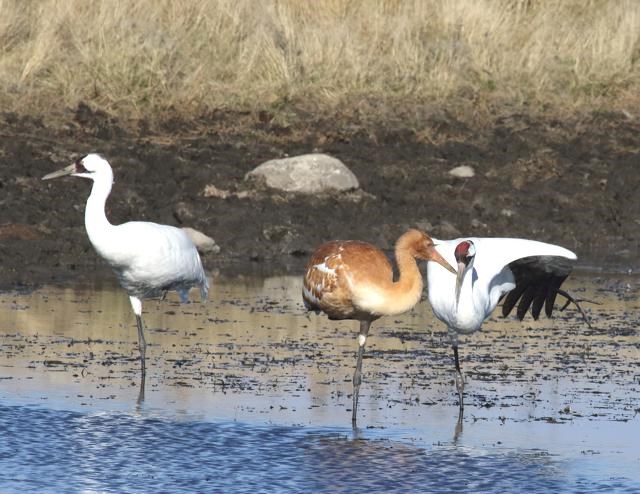In 1941, only 21 Whooping Cranes existed in the world, and many thought North America鈥檚 tallest bird was doomed to extinction. Through decades of dedicated and painstaking efforts, the endangered Whooping Cranes now numbers some 650 in the wild.
At least 500 of those Whooping Cranes survive in the Wood Buffalo Aransas Texas flock that migrates through Saskatchewan. The exact number won鈥檛 be available until after counts are completed later this winter.
Each spring and fall, Whooping Cranes migrate through Saskatchewan to and from their wintering grounds on the Texas Gulf Coast and Wood Buffalo National Park on the border between Alberta and the Northwest Territories.
This past fall, 151 were observed near Marcelin, north of Saskatoon. This is the largest congregation of Whooping Cranes sighted in one bunch in over 100 years. Production of young was lower than average in 2018, with only six young 小蓝视频 spotted in that large flock, with a total of 24 young fledged in 2018.
Over the years captive breeding of Whooping Cranes has been successful, with eggs or offspring 小蓝视频 introduced in four locations in the United States to create additional populations of whoopers. Two of these re-establishment programs have failed (Idaho and Florida) while two others have achieved limited success (Wisconsin and Louisiana).
Currently there are about 100 birds in the Eastern Migratory Flock summering in Wisconsin and another 50 birds in a non-migratory flock in Louisiana. Another 15 remain in Florida.
There are about 165 birds in captivity, with just over 115 of those 小蓝视频 breeding birds that are producing offspring for the reintroductions. Those birds are located in Wisconsin, Calgary, Louisiana and Washington, DC. About 50 non-breeders are scattered in zoos and wildlife parks in the United States.




